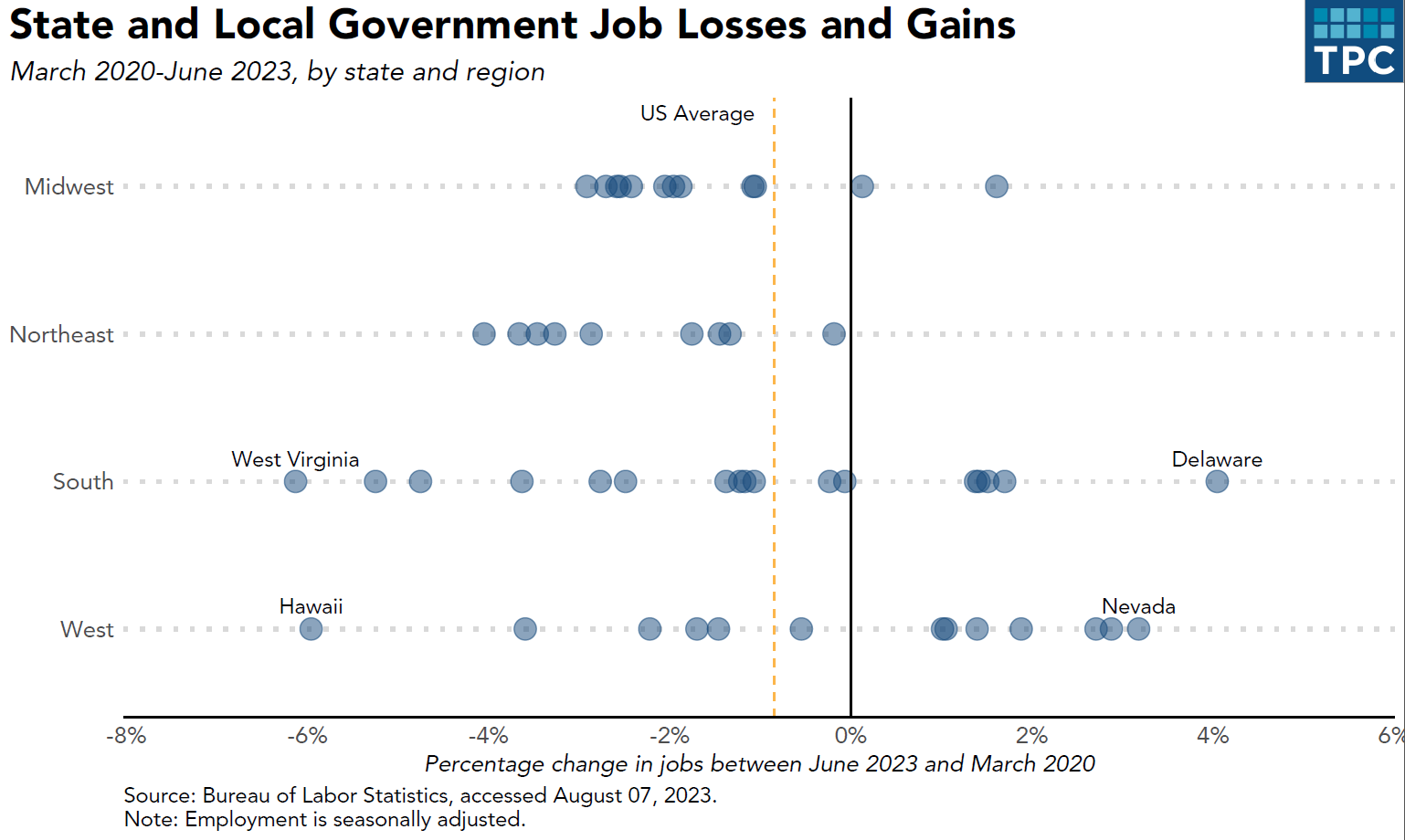New jobs data show while private employment fully recovered over a year ago, state and local public employment remains below its pre-pandemic peak.
Overall, total state and local government employment is still 0.1 percent lower than in March 2020. But not all government jobs are on the same trajectory. State-level education employment exceeds its pre-pandemic totals, while non-education state employment has not fully recovered. There is a similar split at the local level. Local education jobs are 0.4 percent below March 2020 levels, while local non-education jobs are down 1.7 percent since the pandemic.
Education employees make up 52 percent of all state-level public employees and 46 percent of local public employees. However, the local government sector is nearly three times larger than the state one — 14.5 million employees versus 5.2 million. Local government employment also experienced a steeper decline during the pandemic. The local government workforce shrank by 9 percent between March and May 2020, while state-level employment only shrank by 4 percent.

View state and local government employment data by state.
If lagging state and local public employment sounds familiar, it’s because the recovery was quite slow after the Great Recession. Jobs in the public sector did not recover fully from that crisis until 2019. Slow economic growth limited tax revenue and thus hampered efforts to rehire public officials. In fact, state and local government budgets were so restrained that public employment was a drag on economic growth from 2009 to 2014.
COVID-19 led to an even more severe drop in employment. State and local governments, anticipating major budget shortfalls in the early months of the pandemic, furloughed and laid off employees. State and local employees also left their jobs as the pandemic impacted workers’ willingness to work in person, and for less competitive wages than in the private sector.
The pandemic economic recovery has been rapid in the private sector, in part because of remote work capabilities, more flexible and more generous stimulus from the federal government, and better-than-expected revenues. As a result, state tax collections boomed and local revenue growth was strong (if more complicated). From March 2020 to April 2023, state and local governments contributed positively to real GDP growth on average — even without a full employment recovery.
So, if state and local governments aren’t slowing down the economy, why does it matter that public sector jobs have not fully recovered?
For one thing, state and local governments will need to play key roles in implementing the infrastructure bill and climate provisions in the Inflation Reduction Act. Government workers like teachers, police officers, transit operators, and social workers are also vital to a full and equitable recovery from the many consequences of the pandemic. And keep in mind that some sub-sectors of state and local government jobs, like state education and local non-education, have never recovered to their 2008 levels.
Second, public sector recovery varies across states. In West Virginia, public sector jobs are still down 6 percent from March 2020 levels. In Delaware, public employment has not only recovered but continued to grow, with a 4 percent increase since the beginning of the pandemic. This could lead to disparate levels of public services across the states. In total, 38 states are still below pre-pandemic public employment.

The combination of federal aid and better-than-expected finances for state and local governments in 2021 and 2022 helped stabilize public sector jobs and put employment levels on the path to a partial recovery. Many states have also attempted to combat continued vacancies by increasing employee compensation, with 33 states proposing across-the-board pay increases for at least some employee categories in fiscal year 2024.
But state and local governments may now be facing more specific barriers to hiring, like burnout, long hiring processes, and pay competition with the private sector. These challenges need to be addressed to rebuild capacity and continue delivering essential services.




